#museum of the templo mayor
Photo
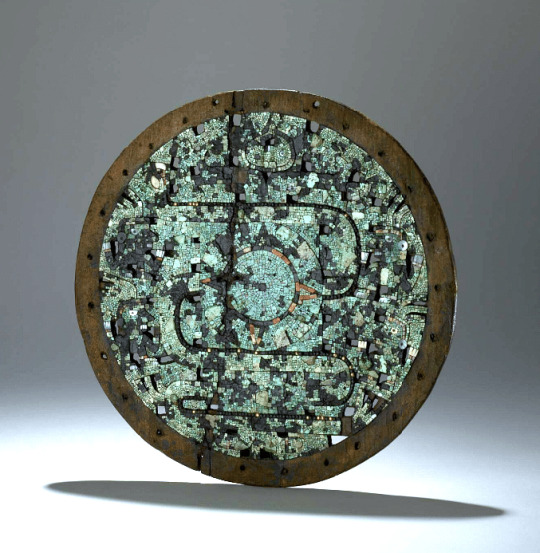
Aztec Turquoise Shield
An Aztec (Mexica) shield of wood covered in turquoise and shell mosaic. Likely used only as a ceremonial shield. The design shows solar disks and a long, winding snake crisscrossing the shield horizontally. The shield was dedicated to the rain god Tlaloc and buried beneath the Templo Mayor at Tenochtitlan. 1400-1521, Mexico. (British Museum, London)
Image by The British Museum
225 notes
·
View notes
Text

Statuettes - Templo Mayor Museum, Mexico City, 2014
#original photographers#photographers on tumblr#travel#mexico#aztec art#mask#ancient art#art#statuette#aztec culture
21 notes
·
View notes
Note
I’m heading on holiday to Mexico City tomorrow and I was wondering if there’s anywhere you think I should check out / you would absolutely visit if you were there. I’d be happy to post you a souvenir for your troubles.
Chapultepec Castle, the Templo Mayor, the Museum of Cultures and the Anthropology Museum. I want to go to Mexico City so badly. Get suadero tacos also
27 notes
·
View notes
Text

Serpent mask of Tlaloc (the Aztec god of rain and lightning), in the form of two intertwined and looped serpents worked in contrasting colours of turquoise mosaic.
Made of 'cedro' wood (Cedrela odorata) with pine resin adhesive. The teeth are made of conch (Strombus) shell and the resin adhesive in the mouth is coloured red with hematite.
The rattles of the serpent tails were originally gilded. They are moulded from a mixture of beeswax and pine resin; the same resin mixture coats the interior surface of the mask.
"Two serpents of blue and green turquoise mosaic entwine to form this stylised mask.
Their interwoven bodies create the prominent twisted nose and goggle eyes associated with Tlaloc, the god of rain. The eyebrows, which double as the two rattles from the serpents' tails, are made from pine resin and beeswax and would originally have been gilded. The teeth are depicted in white strombus shell.
Snakes copulate by intertwining, sometimes in a vertical position. In Mesoamerica, this act of procreation may have been observed and adapted, both visually and metaphorically, to symbolise the fertilizing rains sent by Tlaloc.
The striking green and blue colours of the mosaic evoke the waters and vegetation covering the earth's surface. On the mask's forehead an engraved mosaic tile in the shape of a bivalve shell may symbolise water, while the large green mosaic tile on the opposite snake perhaps represents vegetation, both aspects associated with Tlaloc. Mosaic representations of feathers flanking the face may have mimicked part of a larger headdress that once complemented the mask.
Open cavities in the eyes and suspension holes indicate that this mask may once have been worn. The priest who served Tlaloc in the Templo Mayor at Tenochtitlan was known as Quetzalcoatl Tlaloc Tlamacazqui, and may have worn a mask like this as part of his ritual attire. Another example of a Tlaloc wooden mask, painted in blue, has recently been excavated from the Templo Mayor (offering 102). It bears similar perforations and may have been worn by a deity impersonator."
The British Museum
164 notes
·
View notes
Text

Ancient Aztec Stone Figurines Found in Mexico City
Archaeologists in Mexico City discovered a bevy of stone objects carved to look like humans at a former Aztec site.
Archaeologists in Mexico City have unearthed a collection of stone figurines depicting humans — carvings that the Aztecs likely used as offerings.
The 15 objects were discovered tucked inside a stone chest buried on the former site of the Templo Mayor, which once served as the temple complex of Tenochtitlán, the capital of the Aztec Empire. Spanish forces destroyed the temple in 1521, and the site is now home to the Mexico City Metropolitan Cathedral, according to a translated statement.

Fourteen of the artifacts portray men, while the smallest of the group features a woman.
All of the figurines are in the Mezcala style related to an early Mesoamerican culture that once existed in Guerrero, a state in southern Mexico, that was known for creating objects depicting humans, according to The Metropolitan Museum of Art.
Researchers think the Aztecs valued Mezcala objects and may have looted the sculptures in battle, according to the statement.
"This means that when the Mexicas (Aztecs) subdued those peoples, the figurines were already true relics, some of them more than 1,000 years old," archaeologist Leonardo López Luján, director of the Templo Mayor Project, which led the excavation, said in the statement. "Presumably they served as cult effigies, which they appropriated as booty of war."
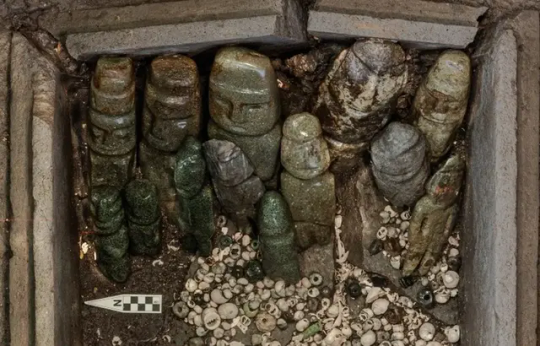
In addition to the figurines, the chest contained two rattlesnake-shaped earrings, 186 green metamorphic stone beads, snails, shells and marine corals.
"In their homes, the Mexicas used to keep their most precious belongings in palm-frond chests, such as fine feathers, jewelry or cotton garments," López Luján said in the statement. "And if we see it from the Templo Mayor … we can imagine the priests storing in these 'stone cases' the quintessential symbols of water and fertility: sculptures of the rain gods, green stone beads, shells and snails."
By Jennifer Nalewicki.
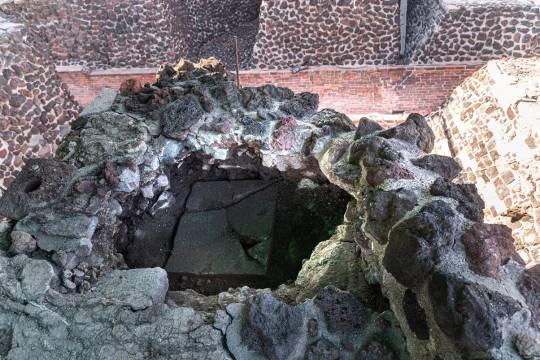


#Ancient Aztec Stone Figurines Found in Mexico City#Templo Mayo#temple complex of Tenochtitlán#Aztec Empire#ancient artifacts#archeology#archeolgst#history#history news#ancient history#ancient culture#ancient civilizations#aztec history#aztec mythology#aztec art
34 notes
·
View notes
Text
I’m actually super pumped to see k!Quackity’s city because Tenochtitlan is super fucking cool okay like okay like-
(This is a super basic overview of Tenochtitlan as explained by a history student. This post goes out to the Americans keeping up with the Karmaland streams who might not know too much about Tenochtitlan itself beyond the Spanish conquest and the siege. I’m gonna try and cite all my information, but I highly encourage people to go look for themselves!!)

(Image: Tenochtitlan and Lake Texcoco in 1519, courtesy Wikipedia.)
That’s an artistic representation of Tenochtitlan from 1519, the year that the goddamn fucking spanish (derogatory) arrived (fuck those guys.) Post-conquest, the city was basically fucked over and redone according to Spanish standards, fucking rip
But before that? Mexico-Tenochtitlan was the head of the Aztec Empire (y’all have probably heard of these guys.)
According to legend, the Aztec (or Mexica) people founded this city after following the guidance of their god, Huitzilopochtli. They left their homeland and traveled until Huitzilopochtli got them to a lake with an island in the middle, and on that island was an eagle sitting on a cactus eating a snake. That island was in the middle of Lake Texcoco, and the eagle and a snake can still be seen on Mexico’s national flag to this day.

Tenochtitlan was built on an island, yeah? Here’s about what the layout would’ve maybe looked like:

(Map: also courtesy Wikipedia. Below the red line on the upper island would have been Tenochtitlan; above was its sister city, Tlatelolco. Click for higher quality.)
What’s so special about that, you may be asking?
Well, I’m sure that the basic education a lot of you may have gotten on the Aztec people in high school would have included a bit on a floating city out in the middle of a lake.
This is the floating city out in a middle of a lake.
Using a really cool thing called chinampas, which were basically artificially-made floating islands used for farming purposes, the Aztecs took what land they already had on the islands and extended them. The chinampas were consolidated, creating the city we all know and love today.

(Image: A picture of Tenochtitlan and a model of the Templo Mayor at the National Museum of Anthropology of Mexico City, still courtesy Wikipedia.)
So basically...
Look it up, English community! This shit’s cool, and we don’t learn nearly enough about it in school! This was just the most basic of overviews because I unfortunately don’t have the resources available to me outside of my university library to really do the topic justice if I was to do a deeper dive.
Just try and make sure you’re reading actual Mexican sources if at all possible. Don’t fuck with the Spanish. They’re the ones who ruined it in the first place.
(Also don’t get Tenochtitlan confused with Teotihuacan, though Teotihuacan is also super worth looking up as well if you’re interested in this kind of history like I am!)
#karmaland#karmaland v#a.d. talks history I guess#but again i'm really REALLY not the ultimate authority on this particular topic#ask me about the russians anytime or white america#listen to mexican voices on this one! i just thought i would introduce the topic to the english community#because not everybody in the english community would know about this!#apologies to my mexican mutuals if i did overstep i will take this down
35 notes
·
View notes
Text


Tláloc pot . Ceramic pot modeled with a high-relief figurehead of the face of Tláloc, the god of rain. The Mexicas conceived it as made up of two snakes that intertwine themselves on the nose and gather together face to face with their heads where the mouth is located. In this case, said snakes can be appreciated through the bands with vertical lines and alternate circles that are found over his brows, eyes, and nose around the mouth.
It was located in the 21 offering of Templo Mayor and held on its inside various pearl shells and green stone beads. The latter being symbols of water. It belongs to the IV stage (1440-1469 d.c)

Offering 107 . This offering was located at the foot of the great platform of Templo Mayor and on its north side; that is to say, the corresponding one to the shrine of the god Tláloc. Its deposit took place during the VI stage of the building (1486-1502 d.c)
In this case, the Mexica priests arranged more than a thousand green stone beads that formed part of necklaces and that were found concentrated in three groups. This magnificent offering consists of two feline skeletons, one human skull belonging to an adult male individual, sea snails, flint knives, and silex as well as miniature obsidian knives
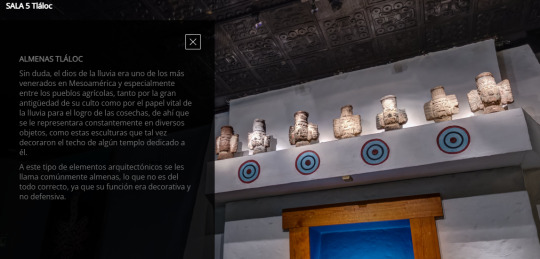
Tláloc almonds . Without a doubt, the god of rain was one of the most venerated in mesoamérica and especially around the agricultural-based towns. Both because of the great antiquity of its cult as well as for the vital role that rain had for the harvests, it is from there that it is represented constantly in different objects like these sculptures that may have decorated the ceiling of some temple dedicated to him.
These types of architectural elements are often times called almonds, which might not be entirely accurate as their function was decorative and not for defense.

Fragments of a Tláloc fire pit . This polychrome fire pit originally formed part of the basement of Templo Mayor. It presents the face of Tláloc with its characteristic paper headdress crowned with feathers, as well as a few symbols related to fire like the Xiuhtótotl ('turquoise bird') located in the front. The position of the hands is a feature of the Teotihuacan style that is added to the multiple Mexica reminiscences from that important cultural tradition.
It was elaborated with tezontle and decorated with ocher colors, red and blue, and applied over a base of white plaster. It was found in the back of Templo Mayor and belonged to the IV stage (1469-1481d.c)
(s. Museum of Templo Mayor, Mexico City)
#;ooc#ooc#;gallery#;t.laloc#/GODBLESS VIRTUAL TOURS OF MUSEUMS!!!!#I LOVE MUSEUMS!!! always have since i was but a lil lass#some parts have the printed text translated to english but some didn't or i couldn't see it but!!#i still wanted to share how cool this is!!!!!#there were other objects that had a relation to tlaloc in the other rooms that i might add to this post but#for now its this#also the second pic on the top; i think it was just a platform to display the pot but#the motif isnt uncommon and i remember seeing it on one of m.octezuma's palaces#u can see it too if u want!; theres another one im looking forward to seeing; the national museum of anthropology#i'll post about it when i look it up!
4 notes
·
View notes
Photo
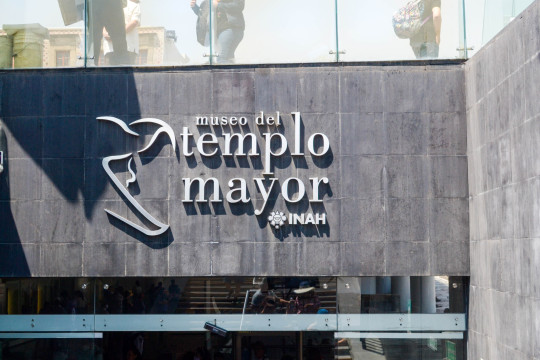






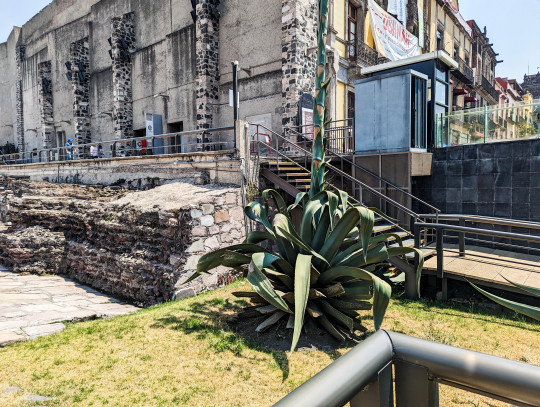

Visiting the Templo Mayor was quite the experience. It’s fascinating to visit a live archeological dig in the middle of a city, but I really respect how they have set up this experience to see how the destruction of this Aztec temple was directly used to build up the main cathedral and other important buildings by the Spanish conquistadores and the subsequent colonizers.
Highly recommend going here--you’ll have to check your bag if you have a water bottle on you, but it’s totally worth it and it’s not an expensive museum experience.
5 notes
·
View notes
Text

Model reconstruction of the Templo Mayor, Wolfgang Sauber, (National Museum of Anthropology, Mexico City).
Templo Mayor
The Great Temple located in Tenochtitlan, sat in the center of the city. With two grand stairways leading to the top of the temple, where two sanctuaries would be found.¹ Stairs so long if not accustomed to would result in tumors and abscesses, as described by Díaz del Castillo.² One of the sanctuaries was dedicated to Huitzilopochtli, the god of the sun and war. The other served Tlaloc, the god of rain and fertility.³ Inside their sanctuaries were two giant tall figurines. The one on on the right was of Huitzilopochtli, having a "broad monstrous face", and his body covered with precious stones. Holding a bow in one hand and a bow in the other.⁴ The other statue of Tlaloc was of a half man half lizard, whose body was said to contain all the seeds in the world. In front of them was a "techcatl" a round stone used for making sacrifices.⁵ Rituals were a daily occurrence in this temple, resident priests maintained the worship of the two gods by praying, burning incense, offering blood, and rarely sacrificing a human.⁶ Offers were made for Tlaloc to prevent drought, that he would send his rain for their crops. His offerings consisted of shells, fish, and sculptures of aquatic creatures. In contrast to Huitzilopochtli whose were skulls and sculpted knives. A contrast between the god of Fertility and the god of war.⁷ Huitzilopochtli's victims sacrificed on his side would have their hearts taken out, and thrown down his stairs. Landing on a statue of his sister Coyolxauhqui, which signified their weakness being thrown on a "defeated woman" This comes from the story of Huitzilopochtli killing his sister as revenge for attempting to murder him before his birth.⁸ Human Sacrifices kept Huitzilopochtli "satiated and happy".⁹ The Templo Mayor was extremely sacred to the Aztecs with its placement in the center of the whole city linked to the creation of Tenochtitlan. When Huitzilopochtli guided the four priests to find a nopal cactus tree which would signify they had found their home. That tree was said to have become Templo Mayor.¹⁰
------------------------------------------------------
Bibliography
Díaz del Castillo, Bernal. The Conquest of New Spain, Vol. 2. E-book. Nendeln: Kraus Reprint, 1967, URL
Diel, Lori Boornazian. Aztec Codices: What They Tell Us about Daily Life. New York: Bloomsbury Publishing USA, 2020. URL
Moctezuma, Eduardo Matos. Archaeology & Symbolism in Aztec Mexico: The Templo Mayor of Tenochtitlan. Journal of the American Academy of Religion, 1985. URL
-----------------------------------------------------
Eduardo Matos, Moctezuma, Archaeology & Symbolism in Aztec Mexico: The Templo Mayor of Tenochtitlan (Journal of the American Academy of Religion, 1985,) p799, URL
Bernal, Díaz del Castillo, The Conquest of New Spain, Vol. 2. E-book, (Nendeln: Kraus Reprint, 1967,) p79 URL
Moctezuma, Eduardo Matos, Archaeology & Symbolism in Aztec Mexico: The Templo Mayor of Tenochtitlan, p799
Díaz del Castillo, Bernal, The Conquest of New Spain, Vol. 2. E-book, p76
Moctezuma, Eduardo Matos, Archaeology & Symbolism in Aztec Mexico: The Templo Mayor of Tenochtitlan, p804
Lori Boornazian, Diel, Aztec Codices: What They Tell Us about Daily Life, (New York: Bloomsbury Publishing USA, 2020,) p142 URL
Diel, Lori Boornazian, Aztec Codices: What They Tell Us about Daily Life, p151
Diel, Lori Boornazian, Aztec Codices: What They Tell Us about Daily Life, p152
Diel, Lori Boornazian, Aztec Codices: What They Tell Us about Daily Life, p168
Diel, Lori Boornazian, Aztec Codices: What They Tell Us about Daily Life, p142
0 notes
Text
Seven days in Mexico City

Seven days in Mexico City: to do the best use of your time:
Day 1
A lot of people will tell you to take it easy on your first day, but usually, people arriving in Mexico City are too excited to stay still.
We've planned your first day around a trip to the city center. And there are dozens of ways to do it.
Just walking through Mexico City's Historic Center offers you many options.
Most people will start in the Zócalo area.
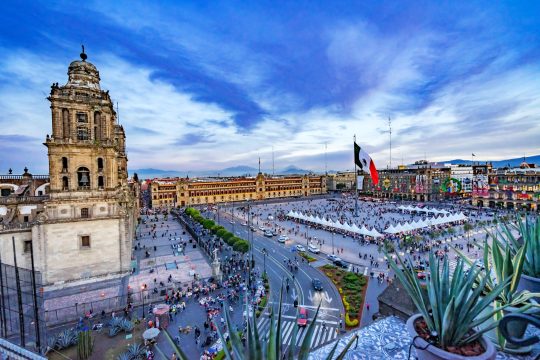
Don't miss the Templo Mayor Museum.
From there, walk west along Avenida Madero. There's a lot to see along the way.
You'll end up at the Palacio de Bellas Artes and the area of Alameda Central.
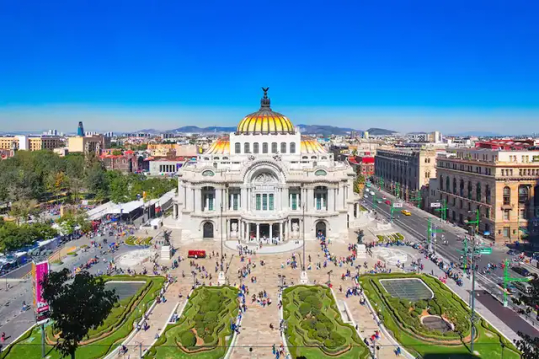
Those truly inspired will then head south to the San Juan Moyotlan neighborhood.
By finishing at the Ciudadela Market, you'll get to see some of the products reflecting Mexico City's strong artistic and artisanal culture.
Day 2
The second day is dedicated to Coyoacán.
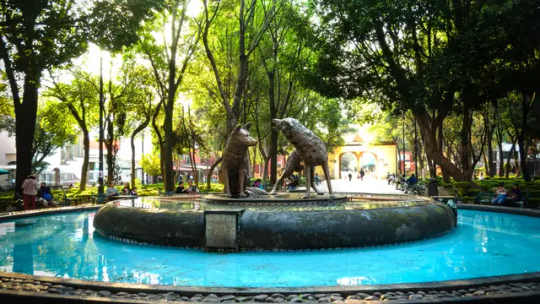
For many visitors to Mexico City, there's no better reason to be in the city than Frida Kahlo, and it's the neighborhood where she lived and died that we'll head to today.
Coyoacán is globally known for its charm. Its streets are designed for strolling, which means that even when arriving here by Metro, visitors spend some lovely extra minutes walking along the beautiful tree-lined streets.
For instance, Francisco Sosa Street has the oldest, most imposing, and beautiful ash trees in the city.
Foreign visitors will make their way from the museum to the Historic Center and the Market. Along the way, there's nothing more to do than enjoy the charming cobbled streets and some of the grand houses from when Coyoacán was just a small village.
For those wanting to venture further, head to the Museum of Interventions in the old Churubusco Monastery. And remember, there's a shopping center right above the Coyoacán metro station. So even if you get lost, there are many things nearby to keep you fed and oriented.
Day 3
On Day 3, we aim to reach the globally renowned Xochimilco.

We can start at the Xochimilco light rail station (bottom left on the map). It's easily accessible from the Tasqueña Metro Station on Metro Line 2.
The goal for the day is to spend a few hours on the small boats called 'trajineras' navigating the ancient canals. Not only is it fascinating, but it also requires no effort and can be quite comforting.
The 13 docks are listed here.
Tips and tricks for navigating Xochimilco well: don't haggle; prices are fixed.
Don't miss the chance to walk (not float) through some of the central neighborhoods of Xochimilco. There are 17 beautiful and ancient neighborhoods - the 'Barrios Originarios' - that are increasingly fascinating. You can explore some of them in just ten minutes.
Xochimilco's market dates back to ancient times and is a marvel of food, flavor, and tradition.
Why not end the day at the Xochimilco Archaeological Museum?
Day 4
Your fourth day will be dedicated to Chapultepec and the National Museum of Anthropology.

Prepare to spend a few hours at the Museum of Anthropology. It covers all of Mexico but is surprisingly succinct.
Chapultepec Park is the largest and most important in Mexico City. It's across the street from the museum, but many visitors may also want to know that the park extends along that same street.
Keep in mind that there are many other museums, such as the National History Museum and two prominent art museums, one of which is the Tamayo Museum.
International visitors will seek even more, either heading east along Paseo de la Reforma or north to Polanco.
Both routes are packed with cultural, architectural, and culinary attractions. There's plenty to eat, experience, and enjoy. If you opt for Polanco, you can stroll along one of the most important commercial avenues in the city: Presidente Masaryk Avenue.
Day 5
Ciudad Universitaria (UNAM) is recognized by UNESCO as a World Heritage Site. On this fifth day, that's where we will go.
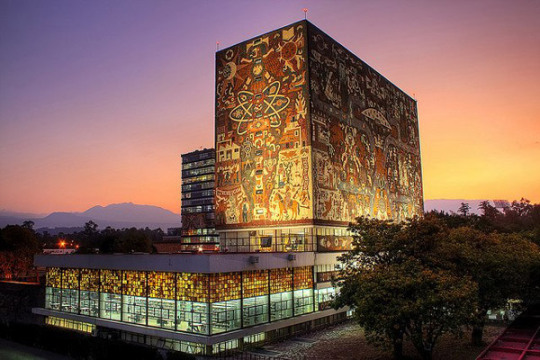
In its construction between 1949 and 1952, more than 60 architects, engineers, and artists participated in a project that, in reality, has never stopped.
Most foreign visitors will want to start at the University Cultural Center. They can get there via the Metrobús (Line 1) at the station of the same name (University Cultural Center).
The more ambitious might want to arrive via the Copilco Metro station, then head south. This route, although much longer, allows for visits to the globally famous Central Library and views of the Rectorate.
These two structures rise above the central campus where the well-known "Islands" and the central gardens of CU are located, designed by the famous Mexican architect Luis Barragán. This magnificent landscape is the everyday backdrop for any UNAM student.
For those not intending to tour Ciudad Universitaria, shorter visits are often combined with excursions to Coyoacán (as suggested on day 2). The Historic Center of Tlalpan and San Ángel are also nearby and are other excellent alternatives.
As a Mexican saying goes, "there's no bad fifth," and this fifth day of the itinerary could very well be the best.
Day 6
Day 6 takes us to the part of Mexico City that has been inhabited for the longest time.
Culhuacán was a city long before Tenochtitlán.
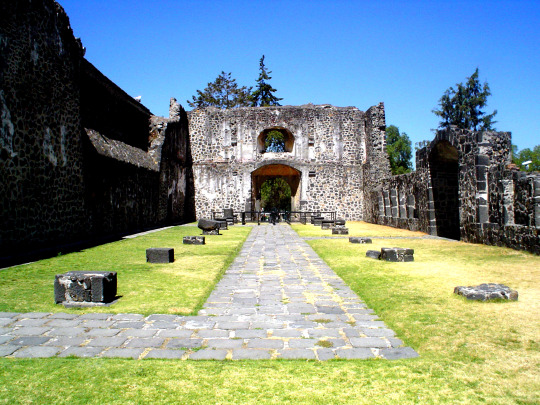
Nowadays, it's more than just the colonial monastery from that era that is also here. Culhuacán is a thriving part of Mexico City shadowed by a mysterious volcano.
At the top, there's a museum about the ancient Ceremony of the New Fire. Centuries of human history are unveiled in a nearby archaeological excavation.
All of this is alongside the famous National Canal. Today, it's a 12-kilometer complex of parks, sports fields, and 18 neighborhoods.
At its southern end, the Canal opens up to the Xochimilco Ecological Park. Less natural but nearby, the new shopping center Parque Antenas is just minutes to the east.
While repairs are underway on Metro Line 12, most visitors will arrive via the Tasqueña Metro.
Day 7
Your last day, it's good to finally see where you've been. The north of Mexico City finally offers exceptional views.
The Basilica of Guadalupe is located at the base of the ancient Tepeyac hill. It was here where the Marian apparitions took place, at least according to legend.

There are a series of architectural wonders. But international visitors might want to climb up to the Cerrito de los Ángeles Chapel. The views are exceptional.
But a cable car ride will give you an even better one. The Indios Verdes Cablebús station is about a 20-minute walk from the Basilica. You'll need a Metro card to board the Cablebús.
Both Cuautepec and the small peak of Tlalpexco Mountain are experiencing a true revival in visitors. You'll be amazed when you arrive.
Read the full article
0 notes
Text
Mexico city Attraction
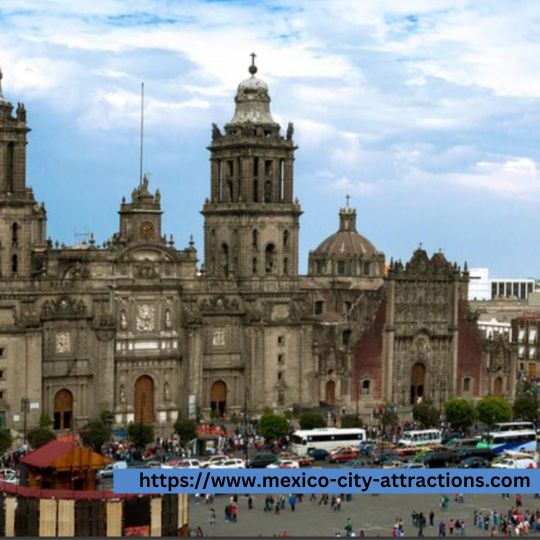
Mexico City is one of the oldest and largest cities in the Americas. The city is blessed with a blend of colonial architecture, spicy cuisines, iconic artwork, and wealthy cultural heritage. The beauty of Mexico City, as it continues preserving its pasts in modern views, is what attracts millions of travelers to it every year. The city sits at an altitude of more than 2,200 meters in the Anahuac Valley and it is surrounded by enormous mountain ranges. From anywhere in the city, you can see two volcanoes covered in snow, Popocatepetl and Iztaccihuatl, standing at about 5,000 meters over it. Among the popular things to do in Mexico City is visiting the splendid Baroque churches and palaces that have survived the test of time since the early colonial period. Famous attractions in Mexico City you shouldn’t miss as a visitor include Zocalo: The Birthplace of the Constitution, The National Museum of Anthropology, Templo Mayor and the Great Pyramid of Tenochtitlan, The Palace of Fine Arts, Mexico City Metropolitan Cathedral, The National Palace, and many more.
0 notes
Text
1 note
·
View note
Text
CDMX - Centro Redux
21 March, 2023
Naomi had to fly back early, but with the extra day I made another run at Centro (or The Historic Center of Mexico City). It’s an area with a bunch of cool stuff; it’s the center of a town conquered by the Spanish so you better believe there is a big ass old church there:

But the star of the show, in my opinion, is Templo Mayor.

Wikipedia:
On 21 February 1978, workers for the electric company were digging at a place in the city then popularly known as the "island of the dogs" as the area was slightly elevated and stray dogs would gather there during times of flooding. Just over two meters down, the diggers struck a massive pre-Hispanic stone disk of over 3.25 meters (10.7 feet) in diameter, 30 centimeters (11.8 inches) thick, and weighing 8.5 metric tons (8.4 long tons; 9.4 short tons). The relief on the stone was later determined to be Coyolxauhqui, Huitzilopochtli's sister, and was dated to the end of the 15th century.
This was just the first thing they found. Turns out to be a massive temple you can walk around in:

Then dive into a nice air-conditioned museum that gives you an insane amount of detail about the pre-colonial Mexica people.
Their beliefs, including this sacred tree.

Rabbit themed pottery

Agriculture: human’s first meta-breaking strategy

And a whole floor about stuff they did with human hearts sometimes.
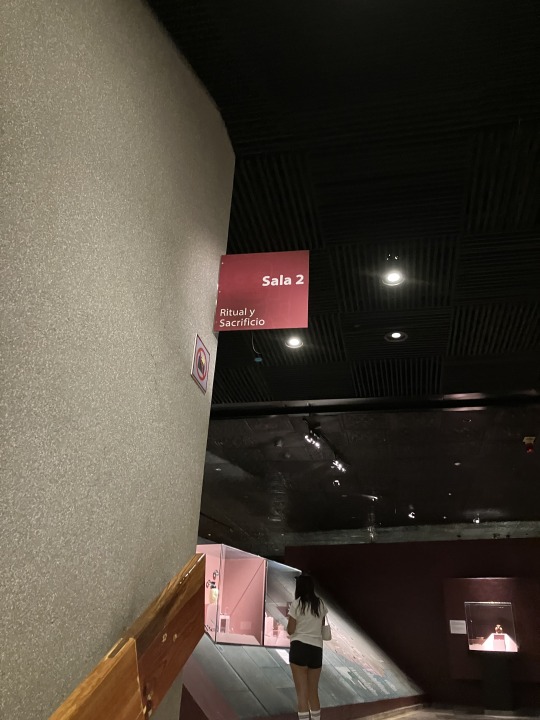

Strongly recommend visiting.
0 notes
Photo

Zona Arqueológica Cempoala in Zempoala, Mexico
The remains of pyramids and palaces, interspersed with vast green plazas and towering palms, provide a bucolic, unhurried setting in what was once the capital of Totonacapan, the cultural center of a people caught between two worlds. For the better part of a century, the Totonacs, subjugated by Moctezuma I (1440-1459), begrudgingly paid tribute to their Aztec overlords in Mexico-Tenochtitlan (in what is today Mexico City). Then, in 1518, something unexpected happened: ships, under the command of Juan de Grijalva, arrived carrying unknown men. For the Totonacs, this was their first contact with Europeans, and for the Spanish an initial glimpse of the vast riches of Mesoamerica surpassing anything they had encountered since arriving in the Americas in 1492. After a short stay in Totonacapan, on the coast of central Veracruz, the Spanish sailed on. When they returned a year later, under the command of Hernán Cortes, they had no intention of leaving. Cempoala (or Zempoala) was the first New World city that Europeans had ever seen, and by all first-hand accounts, they were dazzled. The Totonacs, under the leadership of Xicomecoatl, struck a devil’s bargain with Cortes and his troops in order to throw off the yoke of Aztec domination, an alliance that went a long way towards defeating the Aztec Empire. Once a thriving city of between 20,000 and 30,000 people, the site fell into decline and was virtually abandoned just sixty years later (the process accelerated by two smallpox epidemics). Visiting Cempoala today, the combination of Aztec influences and Gulf Coast traditions are plainly evident. What makes Cempoala distinct from many other Postclassic (1100-1521) sites is that, unlike Mexico-Tenochtitlan, it was never the foundation of a major Spanish settlement, and in many ways is much the same as the Totonacs left it in the 16th Century. Even on the humid, sweltering days of summer, you can often catch a sea breeze from the nearby coast, or enjoy a shady spot beneath a tree or along the periphery of the main ceremonial center. Architecture is somewhat squat and weighty in appearance. The pyramids, fronted with dual central staircases framed by wide balustrades, are gradually step-shaped. Principle structures include: the Templo Mayor, or main temple built in the late 13th-early 16th centuries, the Templo de las Chimeneas (Temple of the Chimneys) with several superimposed sections, and fronted by a ground-level entrance with column foundations that once supported a roof, three round structures of varying dimensions: the Edificio del Dios Viento, a temple to the Wind God (known to the Aztecs by the name of Ehecatl), Edificio Las Caritas (or Building of the Little Faces) originally containing a wall of stucco-covered skulls, as well as celestial murals, and the Templo de la Cruz (or Temple of the Cross), which also contained mural paintings. Artifacts from the site are housed in a small museum within the archaeological zone, offering visitors a respite from the sun, along with the excellent display of Totonac sculpture, painting, and ceramics uncovered by INAH archaeologists.
https://www.atlasobscura.com/places/zona-arqueologica-cempoala
#aztec#colonialism#history#cultures and civilizations#mesoamerica#ancient#architecture#archaeology#Atlas Obscura
0 notes
Text
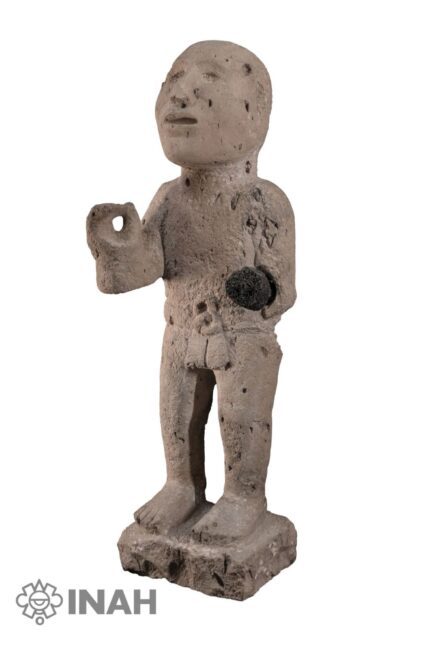
January 15, 2023
Recently Excavated Sculpture of Xipe Toltec Placed on Display at the Templo Mayor
A statue of the Aztec deity Xipe Totec (the Flayed God), excavated in the Moyotlan quadrant of the Aztec capital of Tenochtitlan, will go on display at the Templo Mayor museum in Mexico City. Xipe Totec was the patron god of that Aztec quadrant. It is 27 inches high, carved from andesite. It is missing its shield. He wears a shirt of flayed skin from a sacrificed victim. It was discovered last year during excavations on Las Delicisas street in downtown Mexico City. It was buried under adobe fill, hidden from Spanish invaders.
The restored sculpture is now on display in the lobby of the museum where it will remain until April 2nd.
History Blog has the report here
http://www.thehistoryblog.com/archives/66147
Mike Ruggeri’s Ancient Aztec News
https://aztecnews.tumblr.com
0 notes
Text

January 15, 2023
Recently Excavated Sculpture of Xipe Toltec Placed on Display at the Templo Mayor
A statue of the Aztec deity Xipe Totec (the Flayed God), excavated in the Moyotlan quadrant of the Aztec capital of Tenochtitlan, will go on display at the Templo Mayor museum in Mexico City. Xipe Totec was the patron god of that Aztec quadrant. It is 27 inches high, carved from andesite. It is missing its shield. He wears a shirt of flayed skin from a sacrificed victim. It was discovered last year during excavations on Las Delicisas street in downtown Mexico City. It was buried under adobe fill, hidden from Spanish invaders.
The restored sculpture is now on display in the lobby of the museum where it will remain until April 2nd.
History Blog has the report here
http://www.thehistoryblog.com/archives/66147
Mike Ruggeri’s Ancient Aztec News
https://aztecnews.tumblr.com
1 note
·
View note